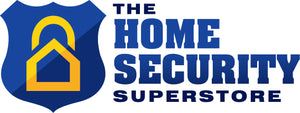Hidden cameras are also sometimes used by television networks as the basis for undercover work, comedic situations or investigative journalism. The video, which sometimes provides evidence which is unavailable by any other means, can provide a laugh or evidence in a criminal case.
In the 70 plus years since then, hidden cameras have benefited from advances in technology, and consumers have benefited from very competitive pricing among manufacturers and distributors. Hidden cameras back in 1942 were very expensive, which is why only the governments of the United States, Great Britain, and Germany could purchase them, but now they are so inexpensive that virtually anybody can get one.
Back in the day when they were first utilized, the cameras used film which had to be processed. There was no such thing as an SD card or wireless connections so if you wanted to watch what the camera was seeing, you had to have a wired connection and monitor, which was extremely limiting.
Now, most cameras are wireless and use SD cards for recording and remotes to control features.
Hidden cameras now have many capabilities including motion activated, scheduled or continuous recording. Many have the capability of recording in complete darkness with infrared lighting. Some have the added capability of recording sound, but those are limited to so-called “body worn cameras.”
Most cameras nowadays have DVR’s built-in where the video is recorded to an SD card. When you want to review the video simply remove the SD card and insert it into your computer. On another level, many cameras now have the capability to stream video to a PC or smartphone with a Wireless USB connection which allows you to view remotely anywhere in the world on your computer or smartphone.
Hidden cameras are tiny pinhole cameras that are placed inside common household objects to conceal their location. The most common products that are used to house hidden cameras are clocks, household appliances such as fans, clock radios, smoke detectors, mirrors, baby toys and various and sundry other household gadgets that people are used to seeing on a day-to-day basis. Their purpose is to catch people doing things that they shouldn’t be doing; acts that are illegal or immoral or both. Frequently they are the only way that you can document wrongdoing, and the video is commonly accepted in courts of law as evidence.
The most common uses for hidden cameras are:
WARNING-Some of these images may be disturbing. View with discretion.
- Home security to catch people breaking into your home. This Clock Hidden Camera is a fully functional alarm clock WiFi spy camera AM/FM radio with remote live streaming, records & sends motion activated email alerts.
- Nanny cameras - to keep an eye on a babysitter or nanny watching over your children. Here is an example of a hidden camera Catching Child Abuse. Child abuse is one of the more difficult crimes to catch and prove. As you know, most children are prone to exaggeration, so it’s easy for the caregiver-either a nanny or a babysitter-to discredit any allegation of abuse. A hidden camera can provide irrefutable evidence of this crime being committed and as a bonus, can act as a security camera catching those same people stealing from you-robbing your liquor cabinet or stealing your jewelry.
- Catch cheating employees stealing from you at your business. This is an example of an Employee Stealing Loot from a business. Business owners and managers cannot be at the store all the time so a hidden camera offers you the opportunity to have an extra set of eyes on your business and catch employees stealing from you. Employee theft is a big problem for business owners. Having a hidden camera is one way to slow it down, if not stop it altogether.
- Catch cheating spouses in acts of infidelity. This is one of the top two or three uses of a hidden camera. Private investigators would go out of business if they did not have jobs for clients concerned about their partner’s fidelity. Because of the X-rated content of examples of hidden cameras catching cheating spouses, we are not showing them. But suffice it to say, infidelity is also difficult to prove. That is one reason why private investigators stay in business.
- Catch elder abuse in the act. This is also a difficult crime to prove because so many patients have Alzheimer’s or dementia which means they cannot remember what happened to them. As the population of the country continues to age, more seniors are going into nursing homes.
Here’s another story about how a hidden spy camera stopped Employee Theft and the businessman in the United Kingdom who used a hidden camera to capture a burglar red-handed via text message. His recruitment firm was being burglarized so the owner set up hidden recording devices. He was surprised one night when he got a text message at home warning him to log into his Wi-Fi camera system because he was being robbed. He logged into his smartphone and sure enough, there was a burglar stealing computers and other expensive gear from his office. Because of his fast action, the burglar was caught by police.
Those are the most common uses of hidden spy cameras. But the fact of the matter is there are no bounds for their uses.
Have you ever used a hidden camera for any of these situations or anything else? Feedback on these posts is appreciated. Please share your experience.

